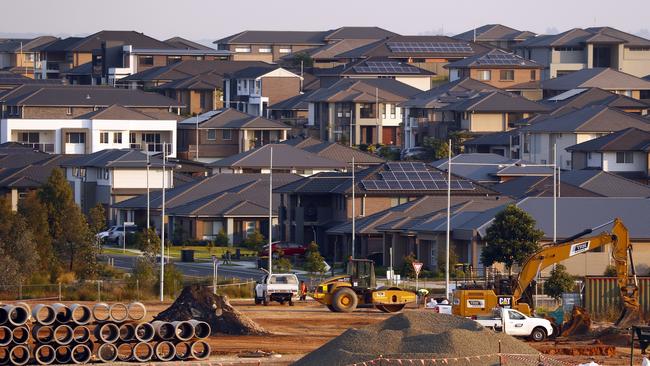Baby boom for south west and western Sydney as NSW birthrate declines
The state’s overall birthrate may be down but in Sydney’s burgeoning suburbs, births are ‘going through the roof’. These are Sydney’s most fertile suburbs.
NSW
Don't miss out on the headlines from NSW. Followed categories will be added to My News.
The birthrate might be down across the state, but the babies are positively booming in Sydney’s south western and western suburbs.
According to the latest Mothers and Babies report released this month, there were 95,133 babies born in 2019, down from 96,391 in 2015, but one in three babies in NSW are born in Sydney’s burgeoning suburbs that include Parramatta, Blacktown, Liverpool and Camden.
The largest percentage increase in births occurred in the South Western Sydney Local Health District, where the number increased by 8.1 per cent between 2015 and 2019.
The building boom in places like Oran Park, Wilton Greens, Currans Hills, Gledswood Hills and Macarthur Heights is being matched by the number of babies.
Campbelltown paediatrician Dr Andrew McDonald said he had never been busier in his 30 years in the job.
“We go to the wards to do baby checks every day and we see babies from suburbs we have never heard off, there’s a new suburb a month out here and we have never been busier, births are going through the roof,” Dr McDonald said.
“There’s a building and baby boom, one primary school, Oran Park has something like 10 kindy classes and that just wasn’t there five years ago.”

Nearby Cobbitty has experienced a population growth of 15 per cent in 2019-2020 according to the Australian Bureau of Statistics and local couple Jess Ann Falconer and Chris Schmidt have contributed with the birth of twins in October 2019.
“It was a very, very big shock,” Ms Falconer said.
“We went to the first scan and they asked if there were twins in the family and we said no, and they said well there is now. I burst into tears and Chris was laughing.”
Ava and Chelsea, now 18 months, join sisters Lily, nine, and Chloe, seven. Growing a family from two kids to four kids impacts everything.
“We needed a bigger house and a bigger car,” Mr Schmidt said.

As a childcare worker for the past 16 years, Ms Falconer confirms the baby boom is more than just anecdotal.
“There are so many more families inquiring about the baby room and people are putting their names down when pregnant. Our waiting lists are so long now,” she said.
“As for us, we moved out to Cobbitty because the whole area is very family friendly with heaps of parks and young families.”
The largest decrease in births occurred in the Sydney Local Health District, where the number of babies born decreased by 9.1 per cent between 2015 and 2019.
The Hunter New England area was the next most fertile local health district with 11.2 per cent of all births followed by both the North Sydney and South Eastern Sydney districts.
Teenage mothers across the state fell from 2.5 per cent in 2015 to 1.7 per cent in 2019, but at the other end of the maternal spectrum, the percentage of mothers aged 35 years and over rose from 23.4 per cent to 25.9 per cent.
More Coverage
Originally published as Baby boom for south west and western Sydney as NSW birthrate declines




